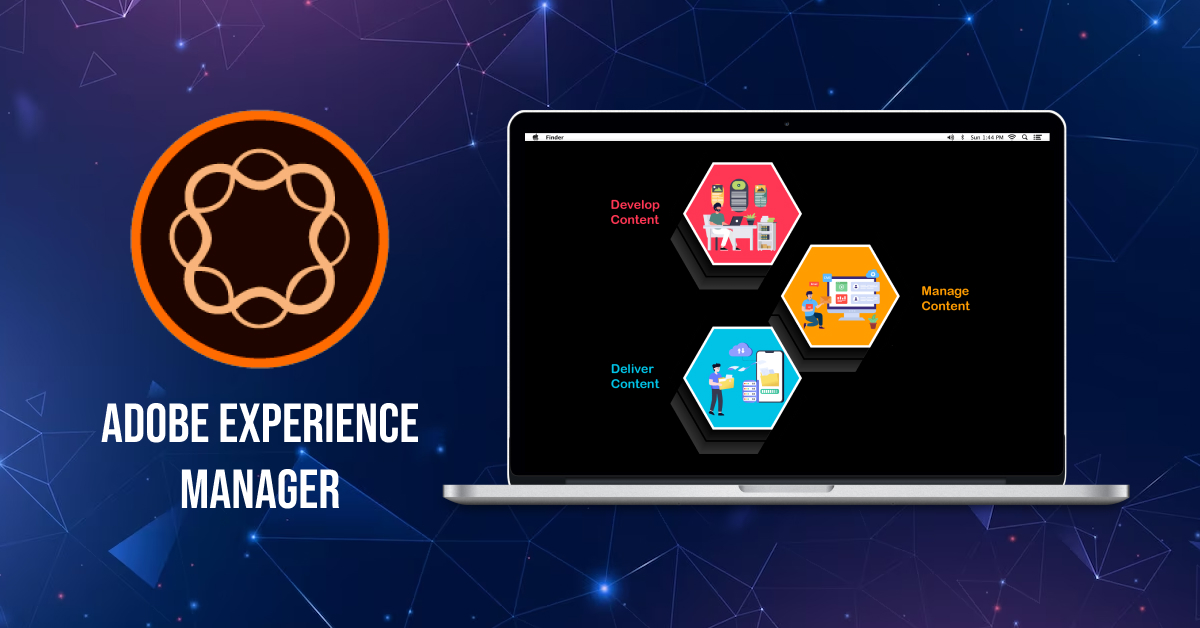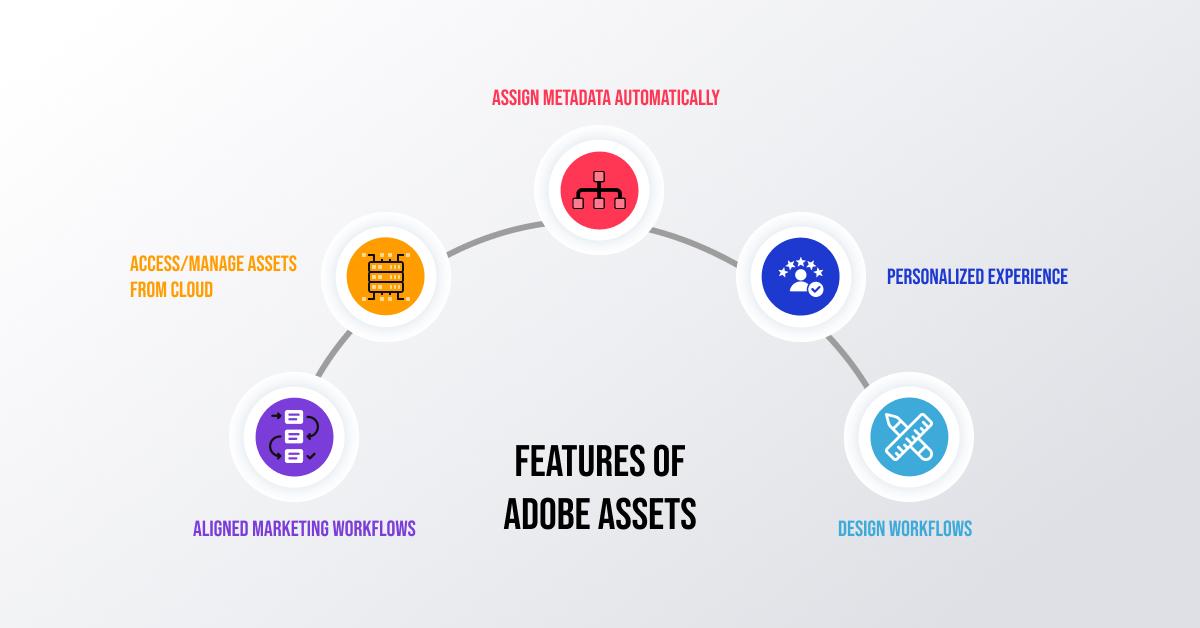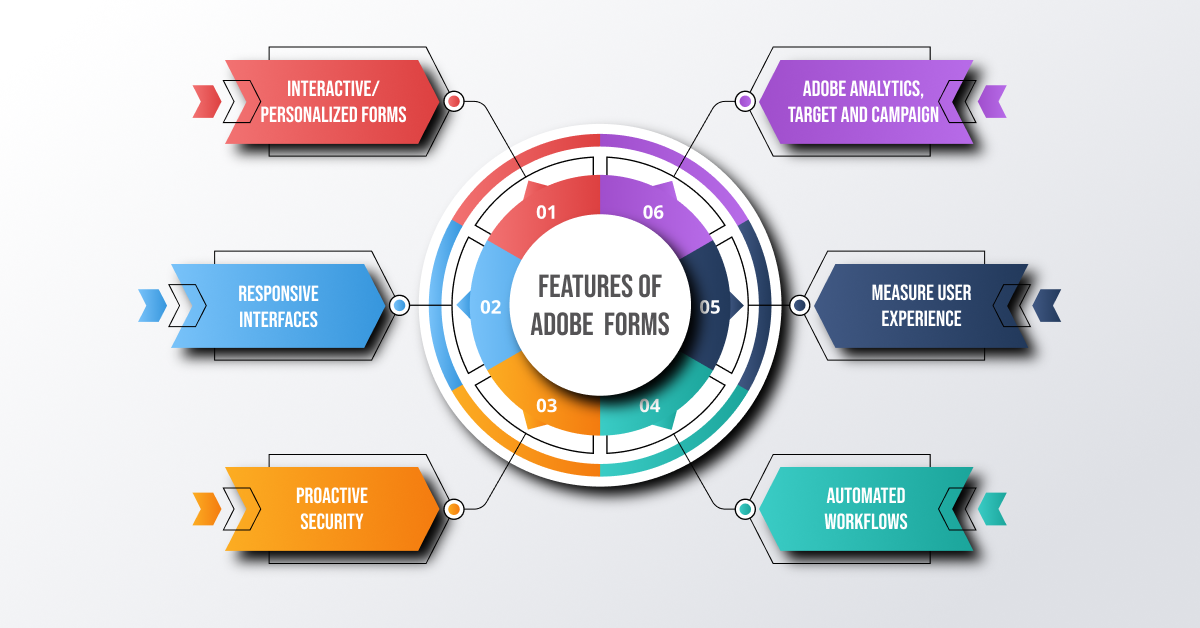
Adobe Experience Manager (AEM): A Comprehensive Web Content Management System
-
By Shamsher Singh Bhullar
-
25th December 2018
The most essential need of the hour for top companies is to stand tall to have an effective online presence. The atomization of business processes is the expected level to conduct business activities by organizations. Activities like digital marketing are quite complex to run with elevated performance.
Tools like Adobe Experience Manager (AEM) are introduced to strengthen the backend and web content management system. AEM is used to manage content and other resources across different channels by creating, processing and manipulating data.
The AEM tool is used to increase a company’s online presence which increases direct sales. To attain high business profits is a major challenge in an online business as the same businesses are emerging in the market in a big way. AEM works as a complete business processing tool right from hiring employees to collaboration with other companies. The AEM tool combines digital content such as images, videos, documents, apps and lists to come up with a single document.
AEM tool aims at reaching target audiences in a big way. It is an enterprise tool that can be used to completely bring a turnaround in conducting business activities. It is considered a comprehensive CMS (Content Management System) for all platforms such as mobile apps, websites and so on.
What is Adobe Experience Manager?

Adobe Experience Manager (AEM) is a website and digital assets content management system that offers a wide variety of functionality and features. Specially built to boost enterprises, Adobe Experience Manager (earlier known as Day Communique/Day CQ) is the epitome of hyper-personalization and web content delivery.
The two primary Adobe Experience Manager products include Adobe Experience Manager Sites and Digital Asset Management (DAM). In short, you can optimize digital experiences through AEM, and enhance customer base through personalized content.
Why Do You Need to Shift to AEM?
Adobe Experience Manager (AEM) is indeed a Content Management System (CMS). However, it is more than that. It is a powerful marketing and analytical tool helping enterprises to yield better results. If you are looking for an enterprise solution that is scalable, secure, and easy to integrate, AEM is the go-to CMS engine.
The highlighting benefits of AEM are mentioned as follows:
- Everything at One Place
Enterprises work on a global level. This means that they need to attract multi-linguistic people with a varied set of interests and devices. AEM cuts down the need to manage content for a diverse range of devices and, thus, customizes content itself. It is a central repository for managing, delivering, and optimizing digital assets and analytics.
- Easy Workflow
Website content management requires a bunch of workforces to bring results into action. AEM makes work coordination easier by introducing easy workflows for website management and content delivery among the members of an organization.
- Personalized Content
Large enterprises have to cater to the preferences of a broad spectrum of audiences. It is a daunting task to create personalized content for each section of the audience. This is where AEM comes in and offers hyper-personalization of content across various devices such as phones, websites, etc.
- Flexible Scale-Up Solutions
Since enterprises need to work on innumerable websites, it becomes mandatory to look for scaling-up solutions. Adobe Cloud Services are the perfect example of scaling solutions that allow you to scale up and scale down instances when required.
- Automated Generation of Metadata
AEM also automatically generates metadata and content tag designation. This reduces a significant amount of stress on enterprises as they consistently need to publish content. AEM does the job itself so that the enterprise resources can focus on more productive tasks.
- Simple Integration
The AEM tool has a high affinity for integrating with various Adobe solutions (Adobe Audience Manager, Adobe Target, etc.) and other third-party applications. For example, you can also connect AEM with Facebook through AEM connectors.
What are the Components of AEM?
Adobe Experience Manager is a digital website and content management system with varied components. These components serve different purposes and utility. The main components of AEM are as follows:
- AEM Sites
- AEM Assets
- Adobe Forms
What is AEM Sites?
Adobe Experience Manager Sites is a content management system that helps manage, create, optimize, and deliver digital experiences across a broad spectrum of channels, such as mobile, apps, websites, etc. It offers uniform content delivery with utmost efficiency.

AEM Sites have the following features:
- The mobile applications with responsive features can be built and managed through AEM from one single platform.
- AEM Sites contain tools for optimization such as adding shopping carts, and product information sync from other systems for applications like eCommerce.
- This is especially helpful for organizations that need to manage many sites across many regions and languages. With Sites, multiple websites can be controlled from one centralized place.
- Send a unified digital experience from different devices such as desktop tablets to smartphones and to on-location screens.
- Provides the ability to manage and launch marketing campaigns from one central location. Also, organize and store your assets in AEM Sites so they can be easily accessed and used for all of your campaigns.
Digital Asset Management (DAM) is a module of AEM used to design, manage and deliver content, images, and videos to any device or screen.
What is AEM Assets?
Adobe Experience Manager Assets is a powerful Digital Asset Management (DAM) tool that offers automation and related resources to efficiently scale, source, adapt and deliver assets across various channels for audiences. This allows publishers and authors to spend less time searching and adjusting content.

Adobe Assets have the following features:
- Assets are easily integrated with the Creative Cloud so that you can bridge creative and marketing workflows. This helps you to deliver consistent quality experiences.
- Your assets can be accessed and managed from the cloud.
- With Adobe Assets, you can automatically assign metadata and tags to all of your assets. Also instantly create collections of assets that are self-updating and shareable across your teams.
- Deliver personalized and targeted experiences to enhance overall productivity.
- Users can design workflows for planning, creating, reviewing, approving, and managing asset production.
There are many considerations and situations to prepare for the implementation of AEM Assets. Our team of experts helps you in the implementation process.
What is Adobe Forms?
AEM form is an interactive solution offered by Adobe to manage, create, publish and update complex digital forms. While it takes care of the frontal interface, it also ensures that every process is integrated into the back end, ranging from data to business regulations. Overall, it is a consolidated solution for document security, analytics, authoring, management, and publishing.
A user can access customizable forms from the Adobe Forms portal according to his needs.

Adobe Forms have the following features:
• Create interactive, personalized statements that can be accessed anytime from anywhere.
• Users can complete forms using help text and video, responsive interfaces, electronic signing, and pre-filled fields.
• Adobe Forms provides proactive security and tracking of sensitive documents.
• Develop automated workflows, and merge form data and documents with your existing systems.
• Measure user experience and effectiveness using insights from Adobe Analytics, Target and Campaign.
Adobe Communities helps you to create online community experiences, including forums, user groups, learning forums, and other social features valuable to your brand, customers, and employees.
Conclusion
Adobe Experience Manager is a mighty tool that has redefined standards for content and web/mobile app development. Gone are the days when developers needed to code everything, followed by a long delivery pipeline. Now, the process is more streamlined, thanks to Adobe for releasing AEM. You can check out our varied AEM services that can help you boost your enterprise. Leverage the power of the new-gen software for more personalized user experiences and customer retention.
FAQs:
What is Adobe Experience Manager?
Adobe Experience Manager is a digital asset management and website, forms, and mobile app-building platform. You can handle a variety of digital assets for various channels, such as forms, documents, rich media, images, videos, etc.
What does Adobe Experience Manager do?
Adobe Experience Manager is a web content management tool that helps business organizations build websites and manage their digital assets, such as images, audio clips, forms, documents, rich media, and much more. It offers hyper-personalization of assets for varied devices such as mobile phones, the web, etc. It is a one-stop platform for all your digital needs.
Is AEM part of the Adobe Experience platform?
Adobe Experience Manager is a part of the Adobe Experience suite of varied tools. It helps in building, creating, maintaining, monitoring and optimizing digital experiences by handling web content and digital assets in one place. These digital assets include forms, documents, images, audio clips, and other rich media files. Thus, AEM is a customer-centric tool for managing web content and digital assets across various channels.
Is Adobe Experience Manager easy to use?
Yes, Adobe Experience Manager is an easy-to-use digital marketing tool. Anyone can easily use the tool to manage digital assets. It has a user-friendly interface and requires no coding.
Is Adobe Experience Manager free?
No, Adobe Experience Manager is not free. It is an enterprise-level software, and it does not offer a free trial.
How much does AEM cost?
The standard pricing of AEM software starts at $30,000 per year. The cost of AEM Sites starts from $60,000 per year. The cost of AEM forms starts at $80,000 per year.
Recent Articles
-

Unity vs Unreal Engine 5: Which is Better?
-

Non-Negotiable Tips for Developing a P2P Lending Platform
-

The 8 Leading Cross-Platform App Development Frameworks You Should Know
-

Step-by-Step Guide: How to Build a dApp on Ethereum with Ease
-

Why Does Your Business Need Blockchain Development Company’s Expertise?

Shamsher Singh Bhullar
 25th December 2018
25th December 2018